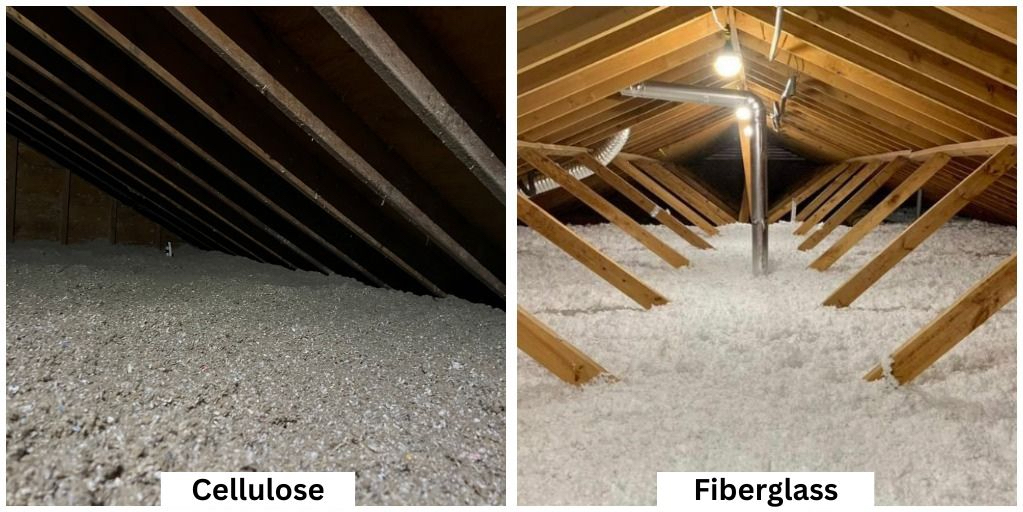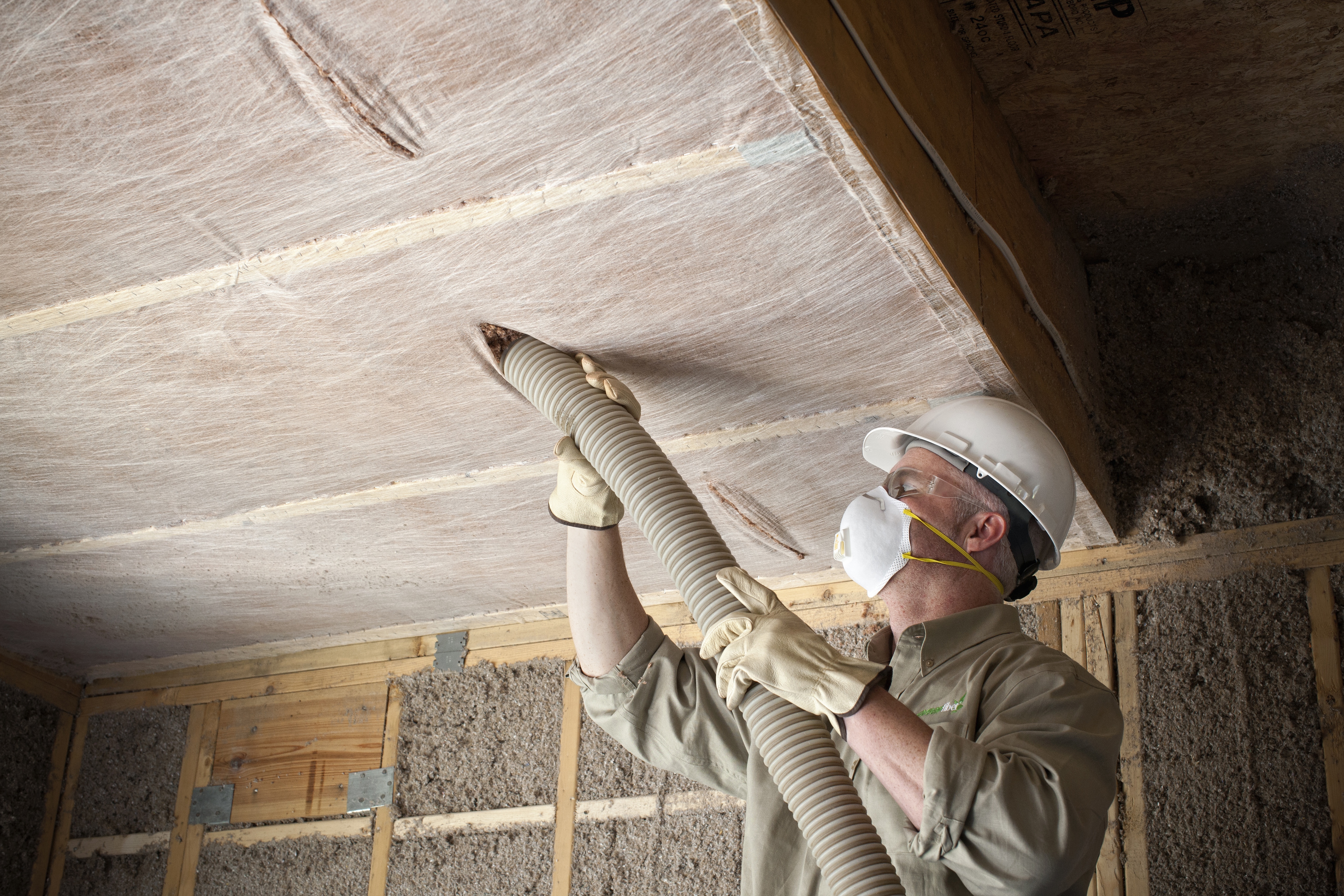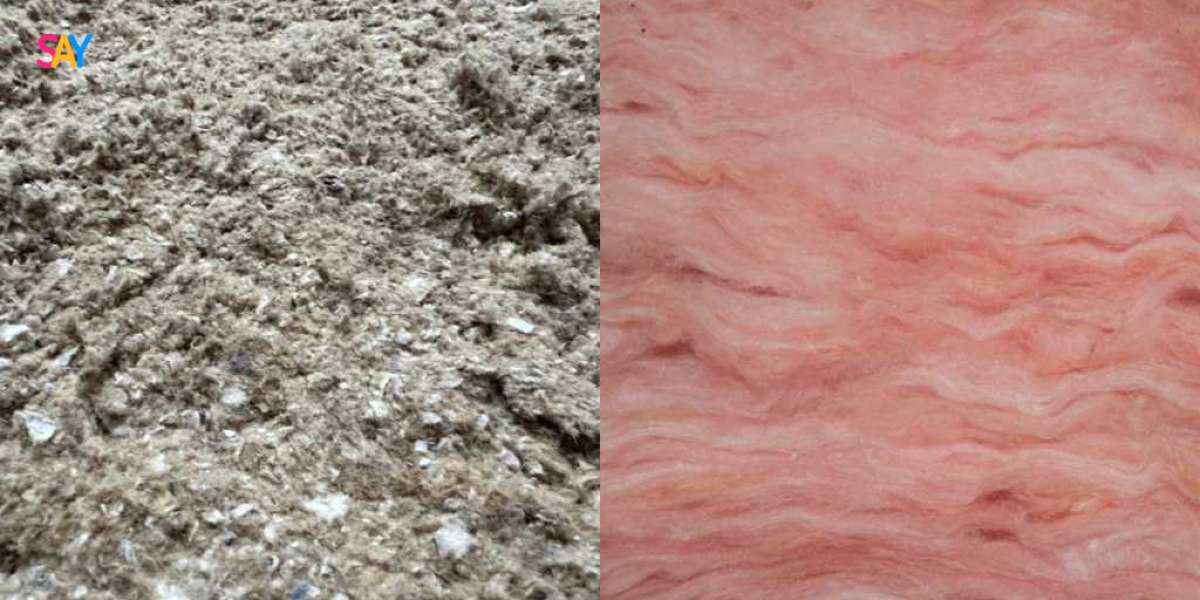More homeowners are choosing cellulose over fiberglass because of its superior air sealing, recycled content, and better performance in drafty or older homes. Cellulose offers higher density, better soundproofing, and reduced air infiltration, leading to more consistent indoor temperatures. Fiberglass, while still common, tends to allow more air movement and loses effectiveness in real-world conditions.
This article breaks down exactly why cellulose is gaining ground, using comparison tables, technical specs, and clear guidance to help readers make informed insulation decisions.
Comparing Cellulose and Fiberglass
The chart below outlines the key differences between cellulose and fiberglass across practical factors that matter most to homeowners:
Factor | Cellulose Insulation | Fiberglass Insulation |
Material Source | Recycled newspaper and plant fiber | Sand and glass spun into fibers |
R-Value per inch | 3.2 – 3.8 | 2.2 – 2.7 (batts), 2.9 – 3.8 (blown-in) |
Air Infiltration | Low (dense-packed) | Moderate to High |
Fire Retardance | Treated with borates | May melt or burn at high temps |
Soundproofing Capability | Higher due to density | Lower sound absorption |
Moisture Sensitivity | Can retain moisture | More vapor-permeable |
Settling | May settle slightly if not packed properly | Maintains shape |
Installation Method | Blown-in or dense-pack | Batts, rolls, or blown-in |
Environmental Impact | 75-85% recycled content | Mostly non-renewable |
Typical Use Cases | Retrofit walls, attics, dense-pack upgrades | New construction, DIY applications |

Key Technical Details
Specification | Cellulose | Fiberglass |
Typical Installed Density | 1.5–3.5 lbs/ft³ (loose/dense) | 0.5–1.0 lbs/ft³ (batts/blown) |
Vapor Permeability | Moderate | High |
Flame Spread Index (ASTM E84) | 25 (with borate treatment) | Varies, may exceed 25 |
Smoke Development Index | 450 | Varies by product |
Mold Resistance | High (borate-treated) | Moderate |
Thermal Bridging Resistance | High (fills gaps effectively) | Low (batts leave gaps) |
Bonus Tip: Dense-pack cellulose excels in older homes with irregular wall cavities where fiberglass batts may not fit tightly.
Why Performance in the Real World Matters
Many homeowners choose insulation based on lab-tested R-values. However, those values don’t always translate to real-world conditions. In homes with wind washing, temperature swings, or drafts, fiberglass often underperforms due to:
- Air movement between fibers
- Poor fit around obstructions
- Gaps or compression during installation
Cellulose, especially when dense-packed, forms a tighter, more complete barrier. It conforms around plumbing, wires, and framing elements.
Bonus Tip: For older homes with inconsistent framing, cellulose fills gaps fiberglass often misses.
Factors Driving Homeowner Preference
Sustainability and Material Source
Environmental consciousness is influencing insulation choices. Cellulose uses up to 85% recycled content, typically sourced from post-consumer newspapers. This lowers the environmental footprint significantly.
In contrast, fiberglass production is energy-intensive and relies heavily on non-renewable materials like sand and limestone.
Comfort and Draft Control
Comfort improvements with cellulose include:
- Reduced drafts
- More even indoor temperatures
- Better noise control between rooms and floors
Dense cellulose slows air movement better than fiberglass. This helps retain heat in winter and keep out heat during summer.
Health and Indoor Air Quality
Some homeowners prefer cellulose due to fewer airborne fibers and added pest deterrents like borates. Fiberglass can release microscopic particles during handling and after installation if disturbed.
Cellulose’s tighter seal also means fewer allergens, pollutants, and outdoor contaminants enter the home.
Market Shift Backed by Data
According to industry reports:
- Cellulose use in retrofit applications increased by 16% from 2019 to 2023.
- Fiberglass still dominates in new builds, but over 60% of surveyed experts prefer cellulose for dense-pack applications in wall retrofits.
This market shift highlights the growing awareness of cellulose's advantages in real-world home conditions.

Things to Consider Before Making a Decision
Before selecting between cellulose and fiberglass, homeowners should evaluate the following:
- Age of the Home: Older homes often benefit more from dense-pack cellulose.
- Wall Cavities: Irregular shapes or obstructions may be better sealed with cellulose.
- Climate: In draft-prone or colder climates, cellulose's air-retention provides noticeable gains.
- Budget: Fiberglass is typically less expensive up front. Cellulose may reduce energy bills over time.
- Moisture Risk: In damp or poorly ventilated areas, fiberglass may dry faster, though both require proper air sealing and vapor control.
- DIY or Pro: Fiberglass batts are DIY-friendly. Dense-pack cellulose requires specialized equipment.
Bonus Tip: Combine cellulose with proper air sealing and ventilation for maximum long-term performance.
Common Questions About Cellulose vs Fiberglass
- Does cellulose settle over time?
Slightly, especially in loose-fill attic applications. Dense-pack methods reduce settling significantly.
- Can I install cellulose myself?
Attic loose-fill may be DIY-friendly. Dense-pack walls typically require professional equipment.
- Is fiberglass bad for indoor air quality?
It can release particles when disturbed. Encapsulation or sealing helps minimize this.
- Which insulation lasts longer?
Both have similar lifespans if installed correctly. Cellulose may perform better over time due to its tighter fit.
- Can cellulose get moldy?
When properly treated and installed in dry conditions, cellulose resists mold due to borate additives.
Topic FAQ
Is cellulose insulation safer than fiberglass?
Both are considered safe when installed properly. Cellulose is treated with fire retardants, while fiberglass can melt or smolder under high heat.
Which has a higher R-value per inch?
Cellulose generally has a slightly higher R-value per inch in real-world conditions, especially when dense-packed.
Will cellulose work in new construction?
Yes, though it is more common in retrofits. It can be blown into wall cavities before drywall installation.
How does noise reduction compare?
Cellulose is denser and typically provides better sound attenuation than fiberglass.
Can I mix cellulose and fiberglass in the same house?
Yes, but it’s best to separate by zones (e.g., attic vs. walls) and ensure each is properly installed.
Make the Right Decision
Homeowners are switching to cellulose for its density, sustainability, and better performance in older or air-leaky homes. Fiberglass remains useful for specific applications, particularly where budget or ease of installation is the top priority.
Choose based on your home’s layout, climate conditions, and long-term comfort goals. In high-performance retrofits or older homes, cellulose consistently delivers better thermal performance and noise control with fewer gaps.
Reviewer:Sophia White, with 8 years of hands-on experience in spray foam insulation systems, reviewed this article to ensure it reflects what homeowners truly need when evaluating insulation materials.




